Architect: Nori Architects
Location: Aichi, Japan
Completion Date: September, 2021
Nori Architects’ renovation of the Asanuma Corporation’s Nagoya Branch Office has given a 30-year-old, nearly all-glass office building in Aichi, Japan a new facade with primarily recycled natural materials. The Tokyo-based architecture firm was tasked with revamping the 8-story tower into a modern office space. As the firm described, “this project is an attempt to reconstruct buildings as a key element of this new material flow in the city, and to reposition architecture in a cycle that is good for people and the earth, by creating a delightful environment that is connected to the changing nature of light, wind, soil, trees, and plants.”
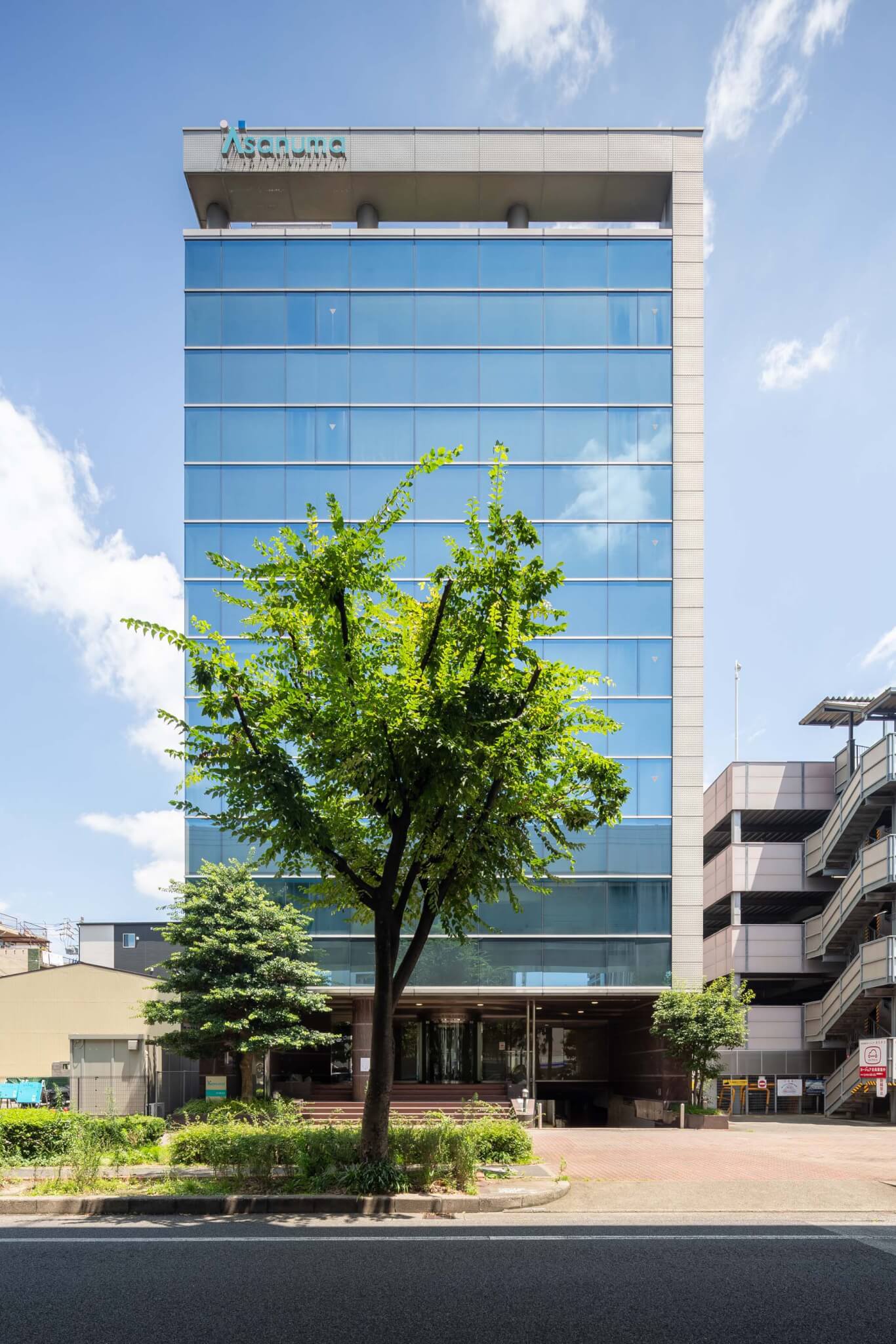
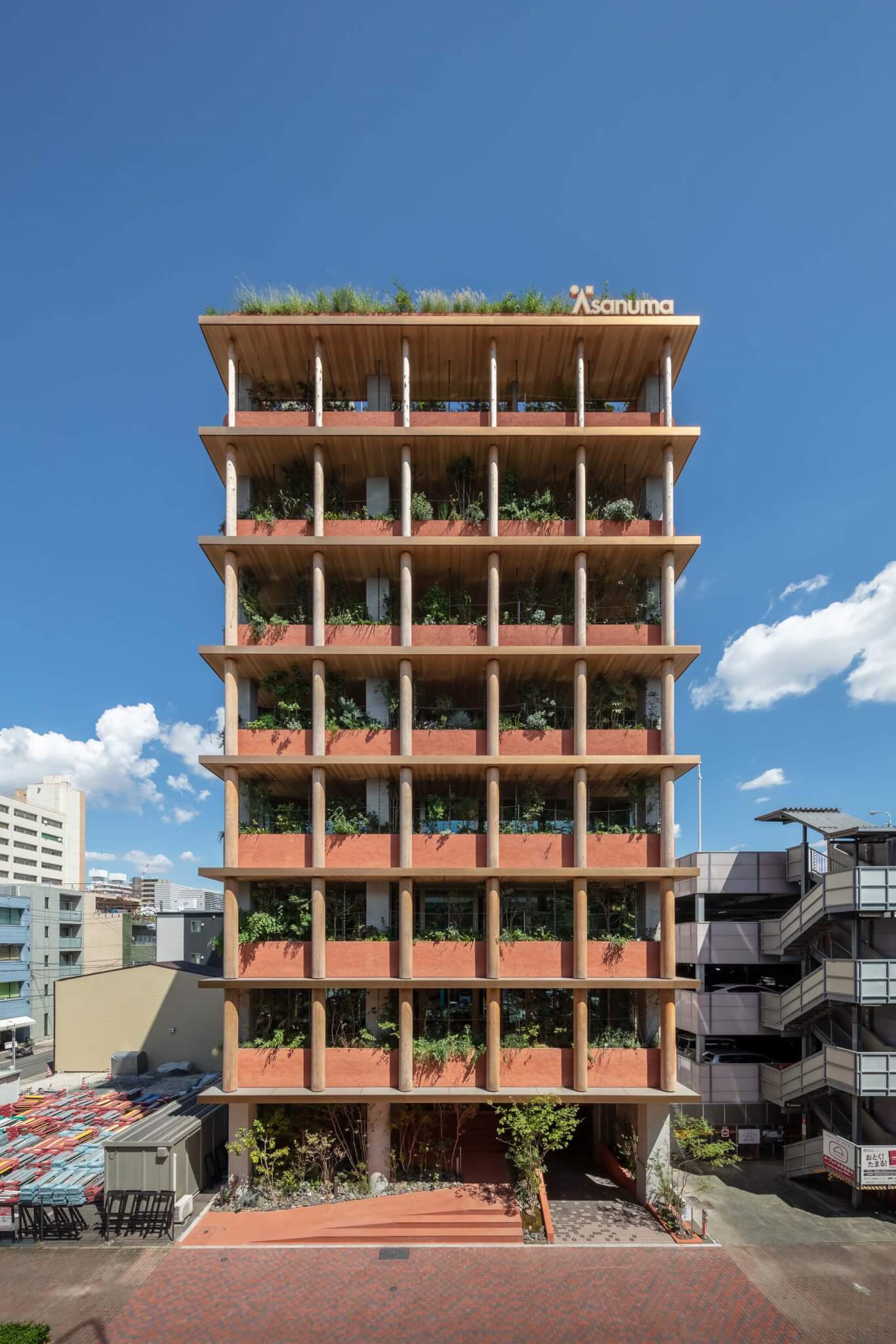
Asanuma Corporation, a large, Osaka-based general contracting firm, worked directly with Nori Architects on the design, and later construction, of their new facade. Dubbed “Good Cycle Building 001,” in reference to the design and construction principles it has aimed to model, the renovation began with adjustments to the existing building’s frame. Rising eight floors above ground—31.4 meters (103 feet)—the building covers a total floor area of 2,781-square-meters (30,000-square-feet).
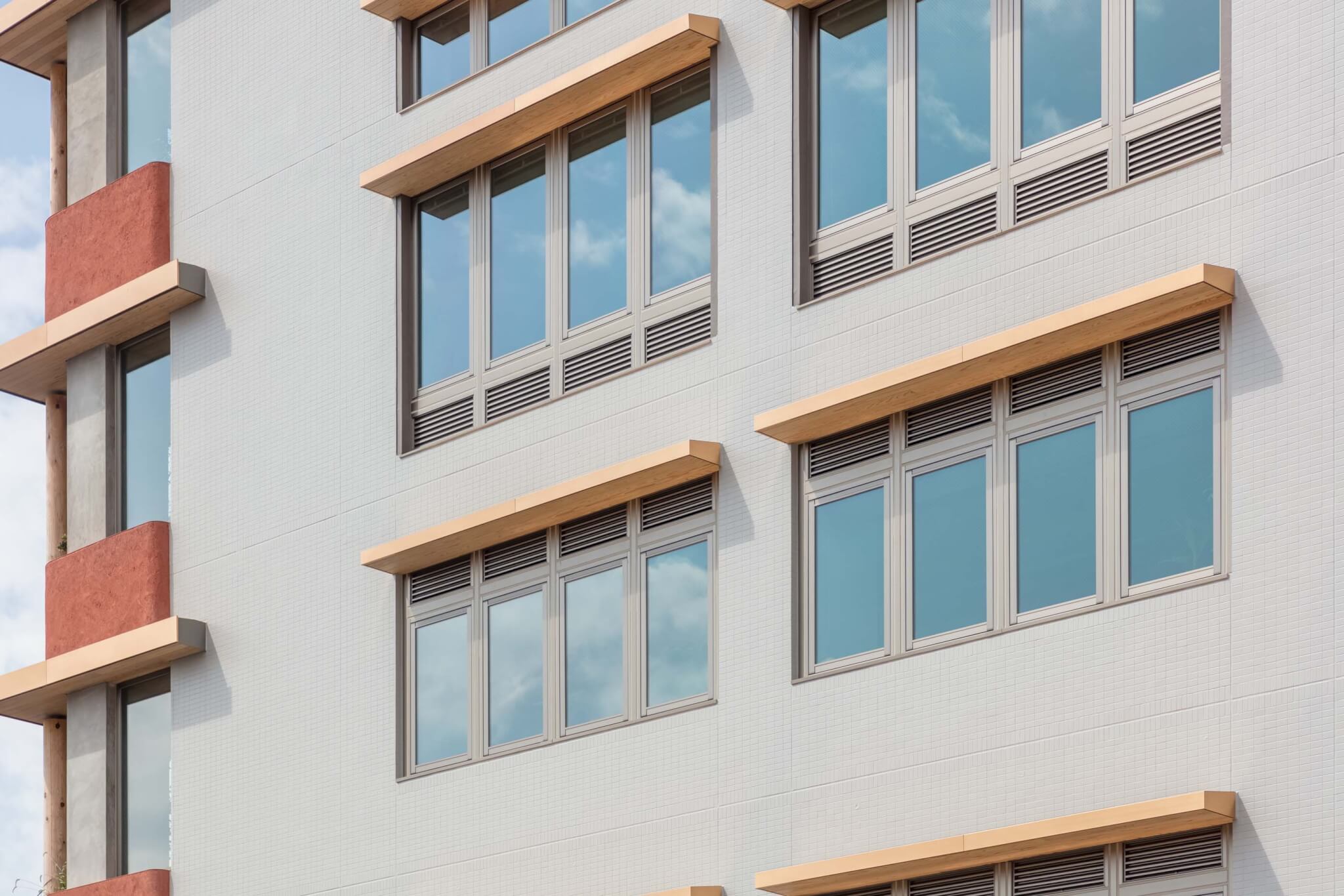
On the first two floors, the east-to-west slabs were taken out to create space for a stairwell, and additional lighting was installed over the entrance and lounge area, to which lighting is otherwise limited by nearby buildings. Moving up the building, on the office floors, existing windows were set back, eaves were installed, and interior programming was arranged around the core to optimize daylighting and natural ventilation in workspaces. This also contributed to controlling solar radiation. Finally, on the seventh and eighth floors—which extend above surrounding structures—the slab on the building’s south side was removed to open the space up to a naturally-lit conference space and hall.
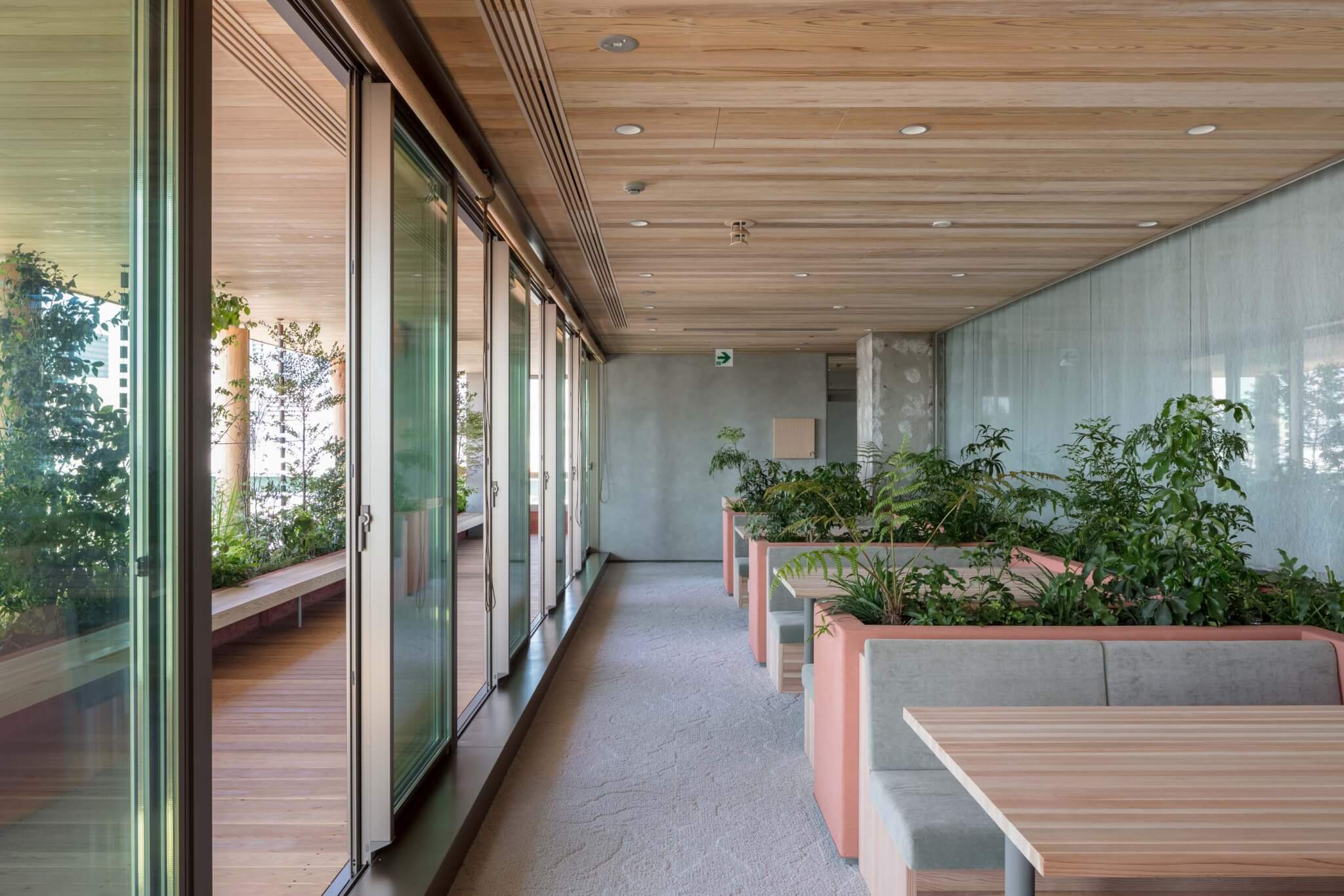
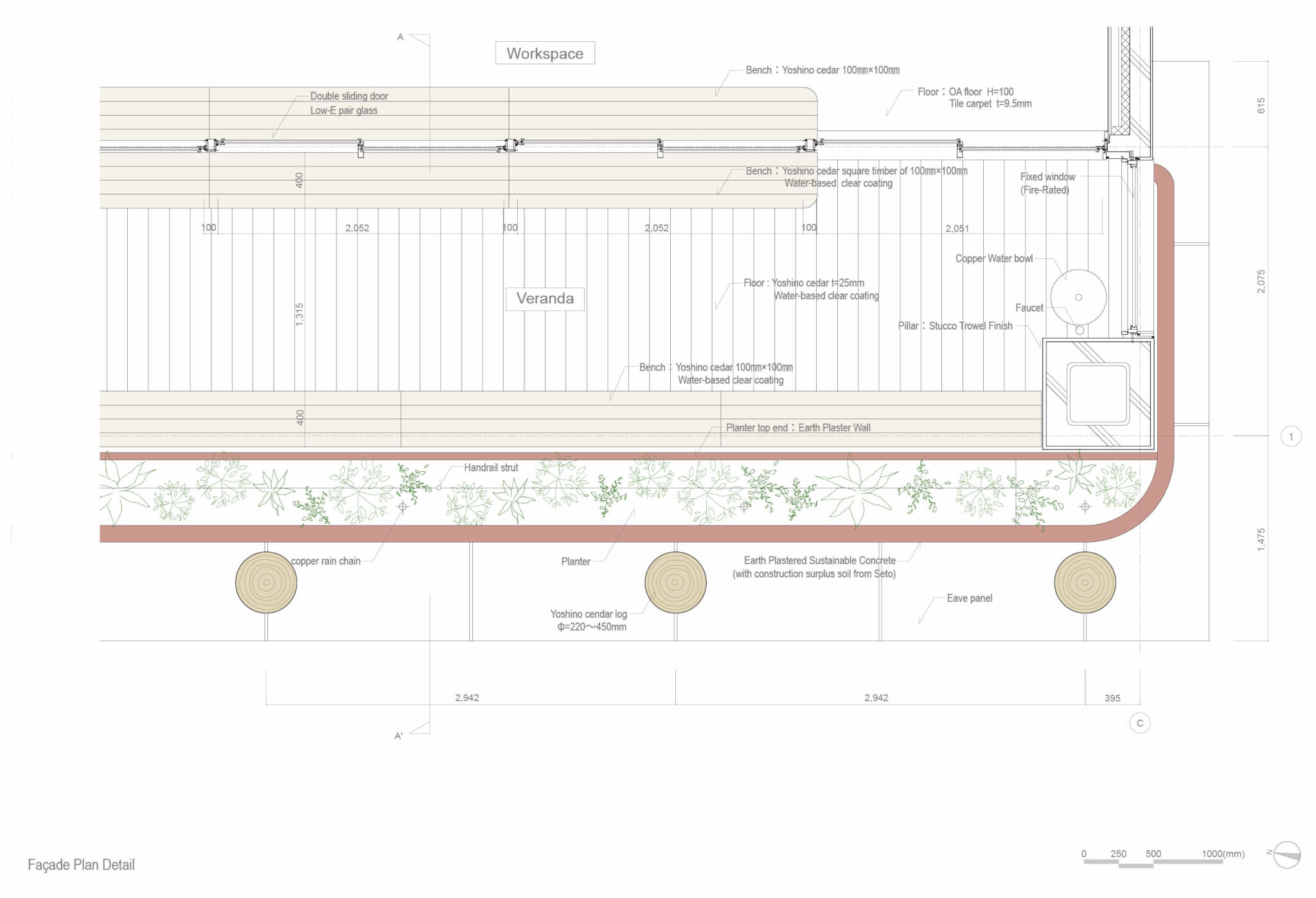
The addition on the street-facing western facade was constructed with earth-plastered walls and logs, emphasizing the intent of designing a building with natural materials. Soil leftover from Asanuma projects across Aichi Prefecture was collected for the walls, as the architects intended to use recycled materials as much as possible. The installation process also followed a unique process, with sustainability in mind.
Workers from the office—the eventual occupants of the building—worked on the plastering process, understanding its construction and maintenance, and therefore accounting for the long-term care of the facade. This also led to a more “natural” look to the material, as Nori Architects said, with indents from the fingers of workers literally marking the labor that went into the wall’s installation. No additional synthetic materials were added to the wall, as would be commonplace, allowing for the material “to be returned to the earth” at the end of the facade’s life.
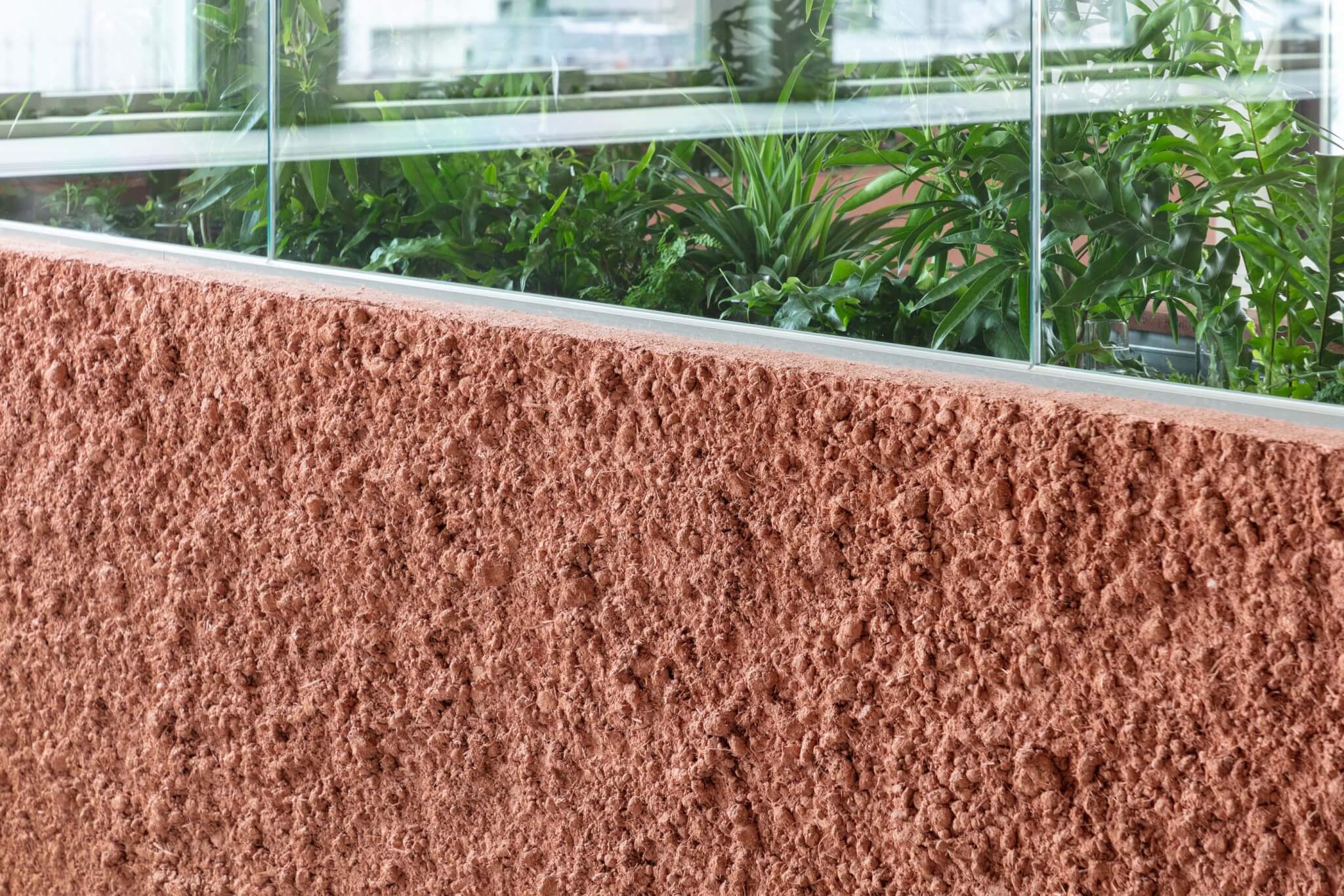
The street-facing facade’s verticality is defined by 130-year-old Japanese Cedar (Sugi) logs from Yoshino forests in Nara, Japan. Asanuma had long sourced timber from Yoshino, which it maintains with sustainable forestry practices. Lining the facade on each floor are five cedar logs that range in diameter from 220 to 450 millimeters (8.7 to 17.7 inches. The logs narrow in size as the facade rises. As Nori Architects explained, this arrangement allowed the logs to be perceived as they naturally stand. The design and construction team minimized the amount of scrap wood leftover, with cedar also being used on the interiors, fittings and furniture. The facade is rounded-out with plantings that hang over the earth plaster wall, concretizing the design intent of a natural-looking face of “Good Cycle Building 001.”
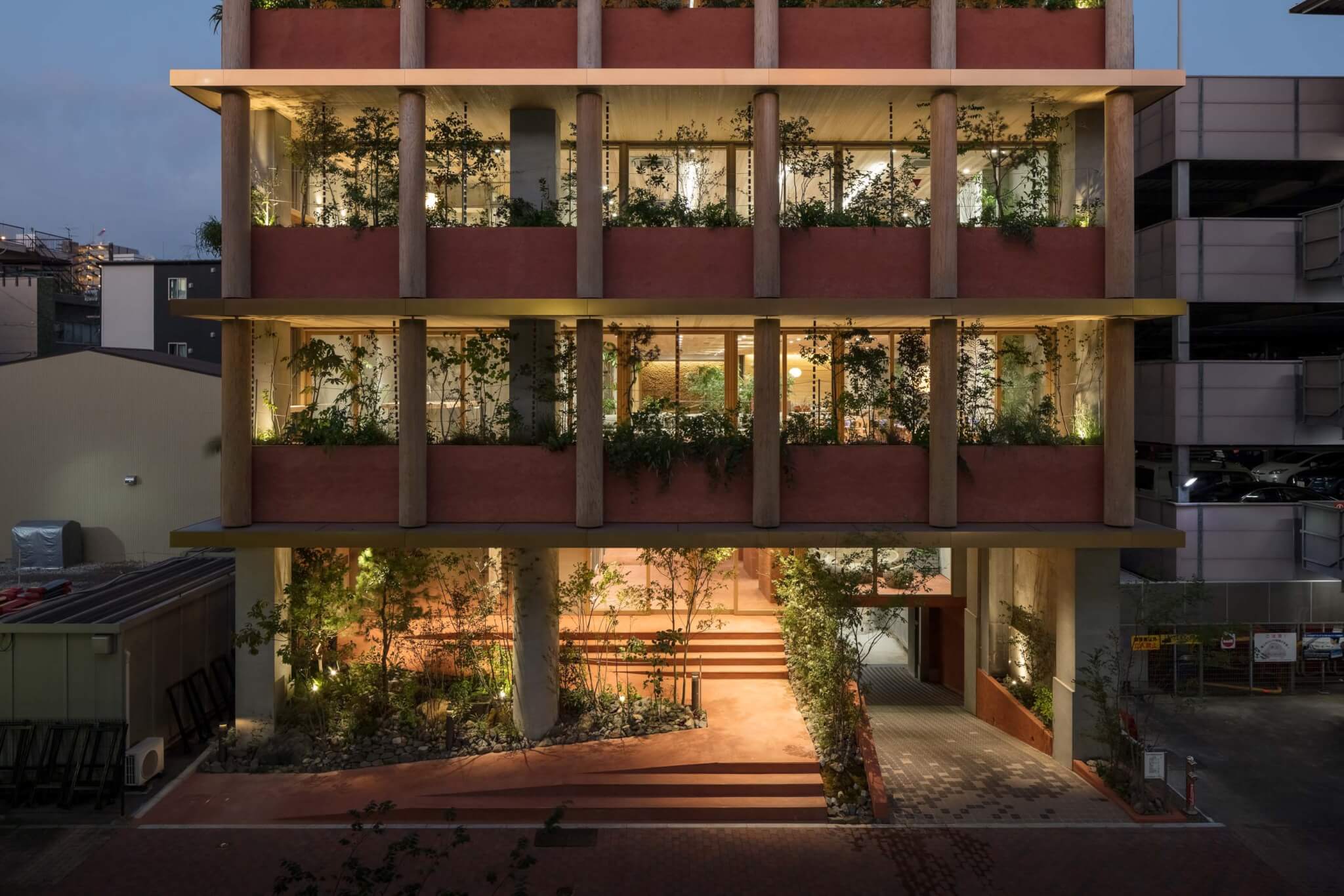
In terms of environmental performance, the team hopes that the building will be a Zero Emission Building (ZEB), with overall energy consumption reduced by 50 percent compared to that of the existing building. Asanuma used in-house energy modeling to show an 85 percent reduction in carbon dioxide emissions, and the team tallied 12 tons of surplus soil used throughout the renovation. The maintenance of the planters was designed to be long sustaining rather than an added amenity that perishes over time, as can happen with biophilic designs. Given the number of recycled materials used throughout the building its name Good Cycle Building 001 comes as no surprise. The recycled materials were used not just on exterior elements, but on interior elements as well; these include earth-plastered ceilings, earth-plastered interior walls, Yoshino cedar panels and furniture, plastic bottle fabricated polyester curtains and polyester yarn, desks made from crushed polystyrene and old plastic boards, among other elements, all of which can be safely returned to the earth.
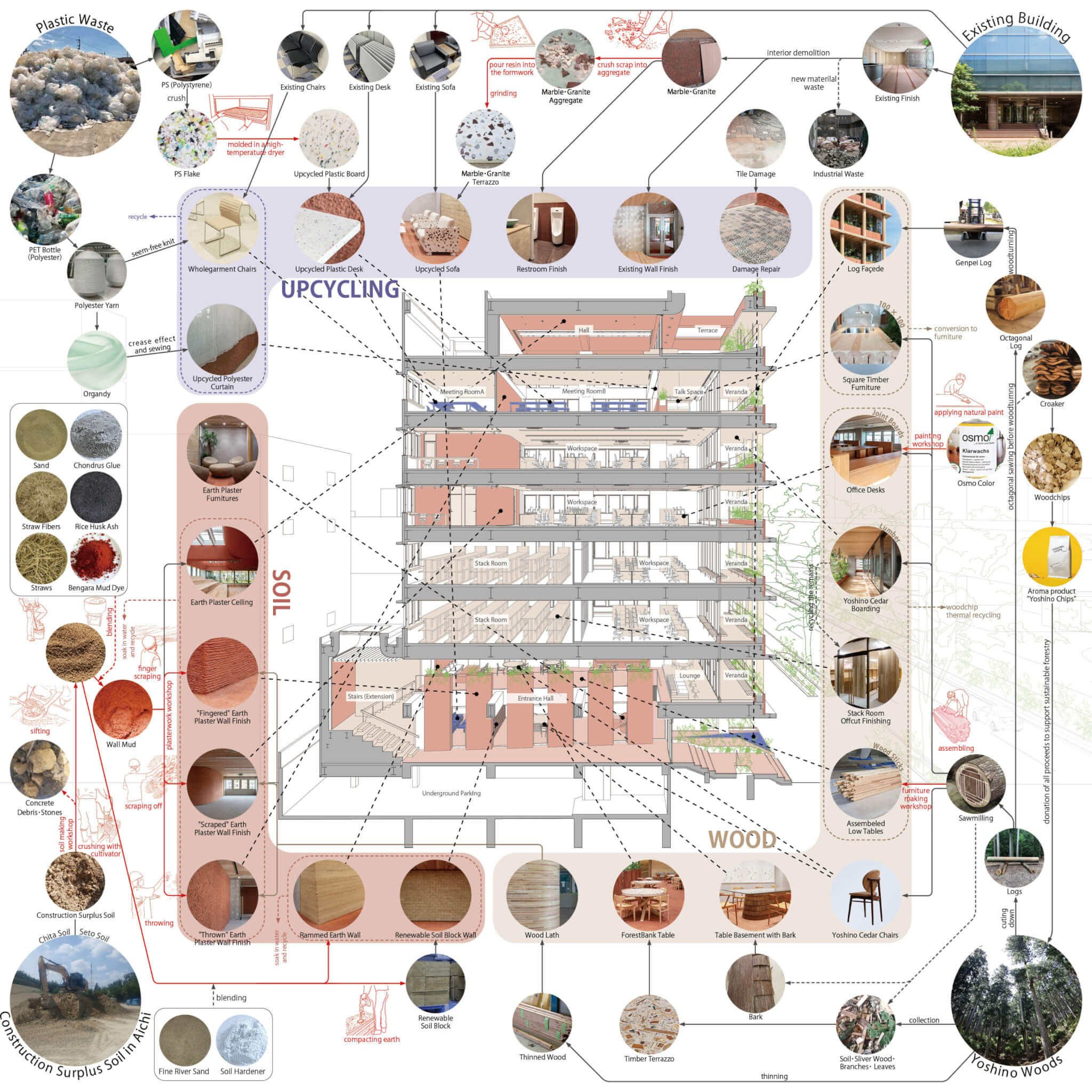
Project Specifications
- Architect: Nori Architects; Asanuma Corporation
- Location: Aichi, Japan
- Completion Date: September, 2021
- Structural Engineer: Asanuma Corporation
- General Contractor: Asanuma Corporation
- Environmental Analysis: Nori Architects; Asanuma Corporation
- Exterior Landscaping: Green Space Co.
- Interior Landscaping: Oryza inc.
- Lighting Designer: CHIPS LLC.
- Textile Designer: Yuki Tsutsumi
- Earth Plaster Wall: Sakan
- Soil for Walls: Surplus construction soil (Sourced from Seto, Japan)
- Earth Plaster Wall Consultant: KS AG, Yawata Industries
- Earth Plaster Wall Installations: Asanuma Corporation
- Exterior Timber: Yoshino Cedar Log











